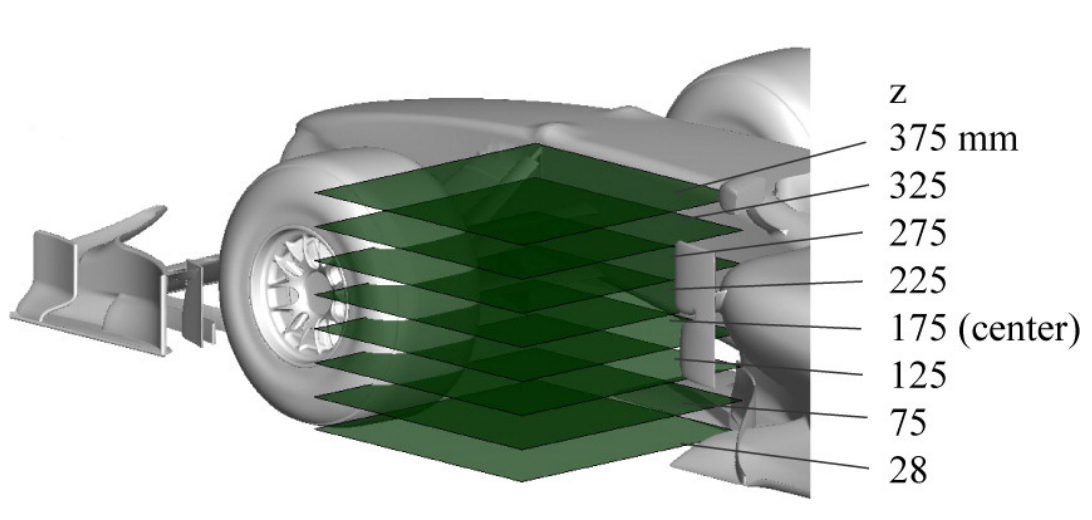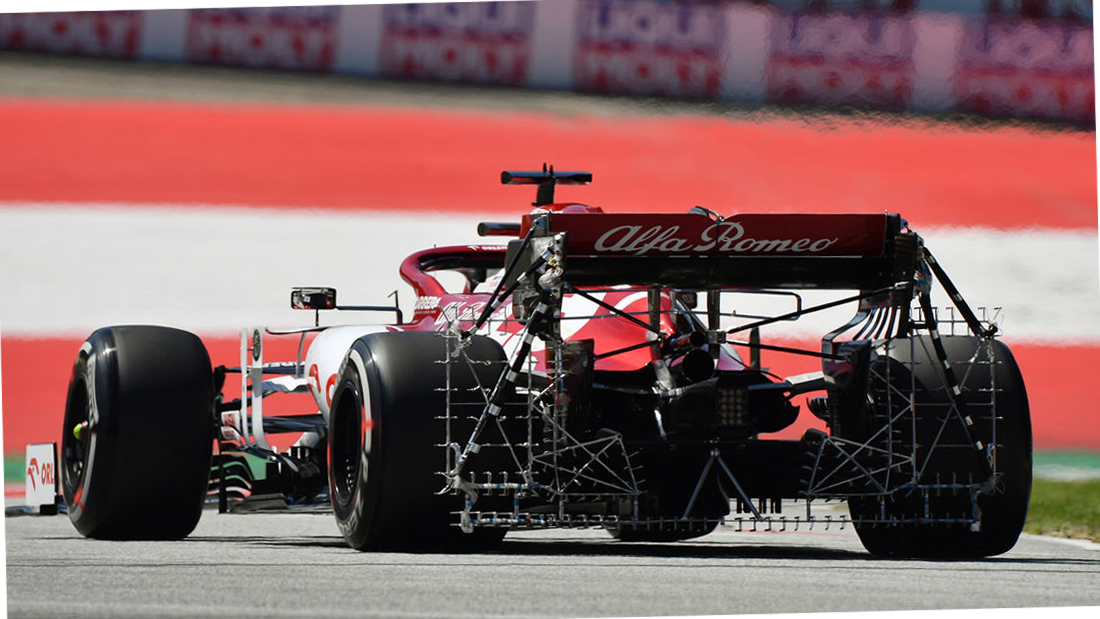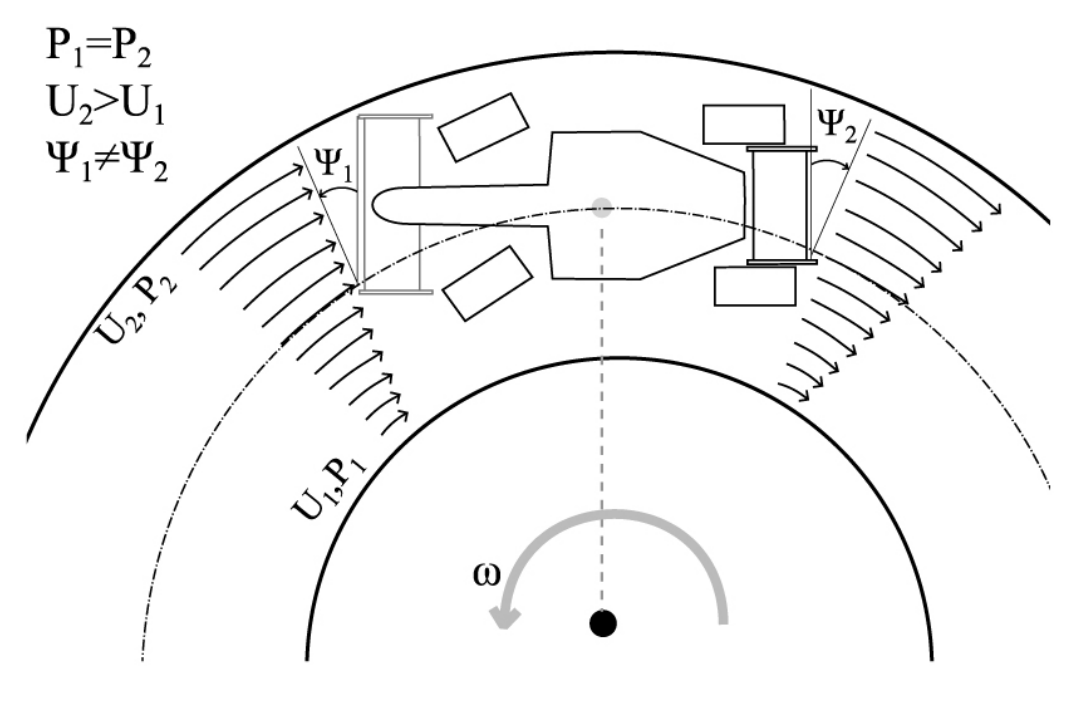WIND TUNNEL III #

Wind Tunnel Instrumentation #
Instrumentation on a wind tunnel model is important. It can be used to troubleshoot data issues, troubleshoot correlation with CFD, or gain new insights. There are a handful of tools available to the aerodynamicist for this purpose.
Particle Image Velocimetry #
Allows deep insights into flow behavior, but is extremely difficult to set up.

Wind Tunnel Benefits #
Attitudes #
A wind tunnel can allow each variation to be swept through a full aero map. Sometimes this can be 40 attitudes. To replicate this in CFD would be running each geometry 40 different times, and then spending time to coallate all the results. Wind tunnels are expensive, but in instances like this it can be cheaper than simulation.
-IMAGE-
Manage Parameters #
There’s a lot of variables. Small changes in geometry can have big effects all up and down the car. These big effects can effect multiple parameters, and there is typically an ideal ratio that the parameters have to be balanced. A car sees a large range of attitudes, so for the change to be favorable it has to make performance at multiple attitudes. The intuition of even a seasoned aerodynamicist isn’t good enough, so other tools are needed.
Wind Tunnel Drawbacks #
Curved flowfield #
A car going through a corner has some amount of yaw angle and a yaw rate. A wind tunnel tries to approximate this cornering condition by driving the vehicle to a static yaw angle.
-IMAGE-
However, this method is incorrect.
The yaw angle of the flow will vary along its length and the relative velocity of the flow will increase with distance from the central axis of its rotation. The air flows at the front and rear of the vehicle have different inflow angles.The difference in the front-rear inflow angle is particularly pronounced during low- and medium-speed cornering, when the angular velocity is high in relation to vehicle speed, and viewed from the perspective of a vehicle, the air flow appears bent. This is termed a curved flow
Aerodynamicists are restricted in their ability to replicate the condition experimentally.
Cost #
Wind tunnels aren’t ideal for sweeping through various high level concepts, because it’s expensive to manufacture all the geometry needed. Limited test time, so it takes time to swap parts on and off. Finally, few resources available for understanding what’s actually going on.
Alternatives #
Track Testing #
If cost no factor, doing only track tests would be the ideal. However, can’t track test when the car doesn’t exist.
If not controlling for each variable, very easy to walk away with more questions than answers. Very resource, time and knowledge intensive to do precision track testing work.
This is why, when F1 cars collect track data, they are outfitted with an array of sensors.

X Photo courtesy of X. https://www.auto-motor-und-sport.de/formel-1/fotos-gp-steiermark-spielberg-bilder-training-freitag/Any abstraction of the true condition is going to have faults.
Straight Line Testing #
Get a car moving up to the target speed, and then clutch in and coast. Based on the rate of deceleration of the car, the drag can be back calcualted. Downforce can be calculated based on the compression of the suspension. The drawback to this is that there’s no way to vary yaw angle, so you get a lot of answers to the straight line question, but few answers to help during cornering, which is what we’re looking for in the first place.
Most of the well known straight line testing facilities is Laurel Hill, owned by the Chip Ganassi Racing Team.
It is an underground tunnel that has been repaved and has had climate control, safety equipment and data collection systems installed. It allows limitless aerodynamic testing in controlled temperatures, free of wind, with a full-size race car traveling at speed. It joins the best elements of real straight-line testing and a conventional wind tunnel.
-IMAGE-
https://www.racecar-engineering.com/tech-explained/the-secrets-of-laurel-hill/
Propelled Sled #
When approaching the problem from first principles, a wind tunnel is a very inefficient
Instead of accelerating a mass of air, just have to accelerate the model. Make the model suffciently light, and it’s cheap.
-IMAGE-
I have a vertical spiral drawing in my notebook. That would be interesting to talk about.,
Conclusion #
Even with the substantial prevelance of CFD in the field of aerodynamics today, wind tunnels remain the most important tool aerodynamicists have.
Wind tunnels are models with failings. Even track tests are models to some extent, as conducting tests such as straight line coast downs are not representative of real conditions.
So why is a wind tunnel needed?
